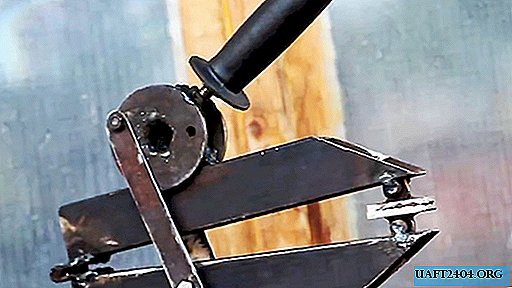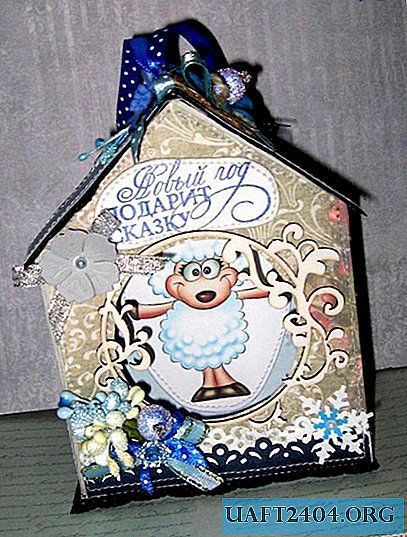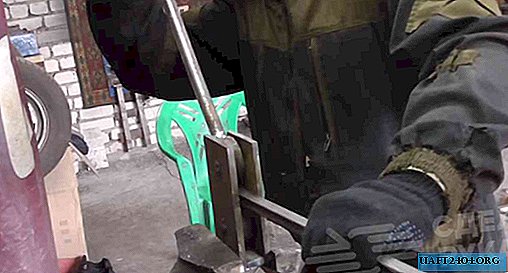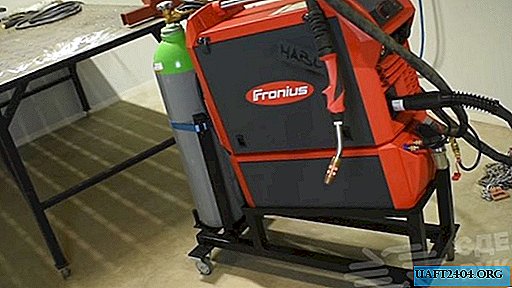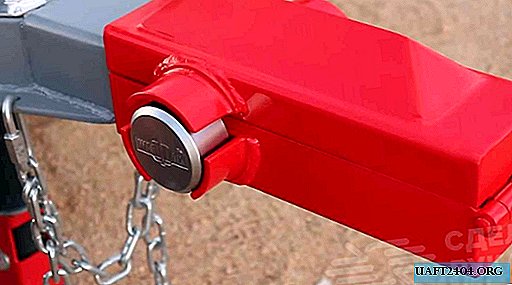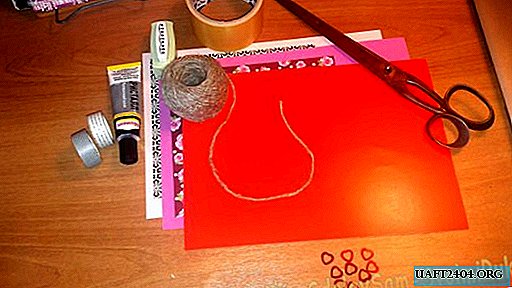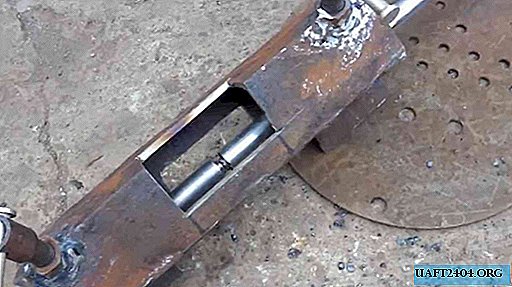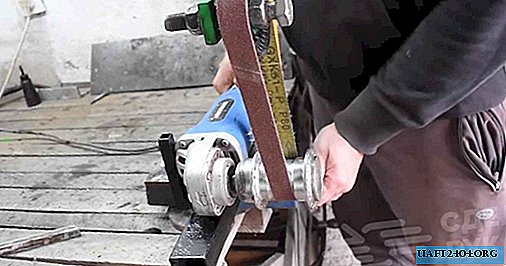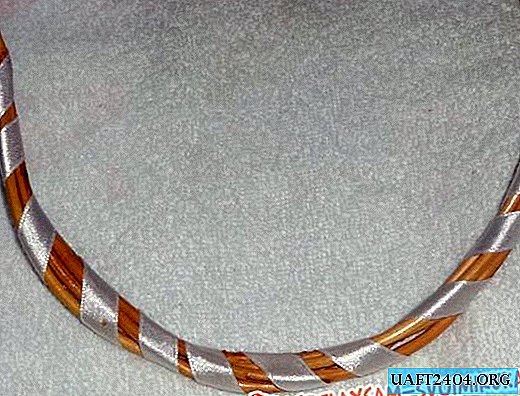Share
Pin
Tweet
Send
Share
Send
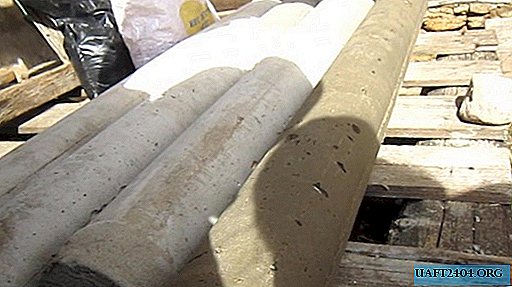
Apparently, it's time to talk about the aspects of creating a reinforced concrete column for the fence. Since I have long wanted to do this. And for beginners in the matter of concreting, it is not out of place to learn the true technology of creating cement mortar. Why am I saying true? The fact is that, after shoveling (no, not sand with cement) a lot of information sources on the topic of cementing, I came across an incredible range of opinions, variability of actions, range of proportions. It seems to be true. Depending on the brand of cement, the required brand of concrete, the desired proportions and consistency are selected. But the authors of many articles did not focus on trifles. After all, such works are considered dusty, dirty, even uncomfortable. I want to quickly deal with them. What can we say about pouring concrete pillars with your own hands? But in everything there is a measure, more precisely, a middle ground. And in this article I will tell you how to create a reinforced concrete pillar structure with your own hands with the right cement-sand mortar. After much thought, I decided that I would still share the calculations that relate to the cost of the material. Therefore, those who want to save on the manufacture of concrete columns during the construction of the fence, be sure to read the article to the end. And perhaps, re-read one more time.
Pillar Tools
- Yardstick.
- Gloves.
- Powerful wire cutters.
- Pliers.
- Wrench and screwdriver.
- Hand file or electric jigsaw.
- Sledgehammer and anvil for straightening armopoyas.
- Master OK.
- Bucket of 15 liters.
- Measured tanks.
- For mixing, an electric drill with a mixer nozzle is required. She will facilitate the process. After all, twenty-five pillars are not jokes.
Preparatory work
For a successful start, I share the work of preparing the material and handling the cement mortar. The procedure is as follows:
- Let's start with the pipe. Mark two parallel longitudinal lines on opposite sides of the pipe. These are the cut lines.
- Use a hand saw or an electric jigsaw for sawing.
- Align the two halves by placing one in the other.
- Drill a pin hole exactly in the middle of the pipe.
- Set aside parts of the pipe and move on to the reinforcement element.
- Measure the length and width of the mesh for reinforcement. Length - this is exactly half the purchase sheet of 1x2 meters. But the width is equal to the perimeter of the pipe, that is 34 cm. Here, work with wire cutters.
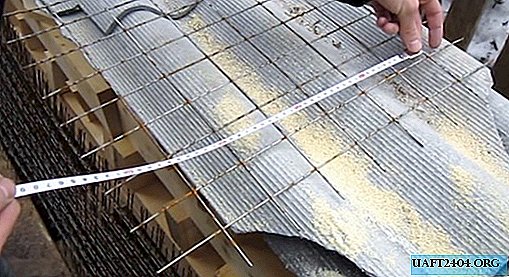
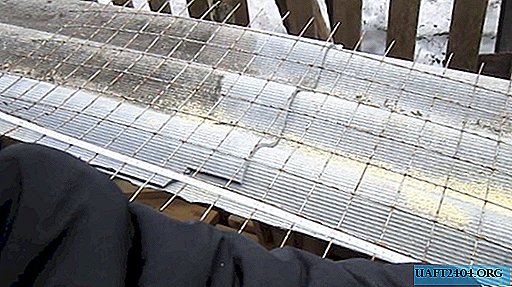
- Twist the workpiece into the cylinder. There are two ways to sweep: outward with crossbars or inward with them. Of course, you need to twist out the transverse rods. In the opposite embodiment, the pipe halves encounter an obstacle when closing the duct in the form of longitudinal rods. Bending and twisting the mesh is not an easy thing. Use gloves, natural supports and pliers. Be careful and careful. The grid bends gradually. Compliance with the exact size of 34 cm will save you from unnecessary actions in the future.
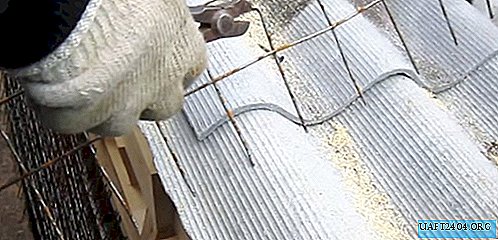
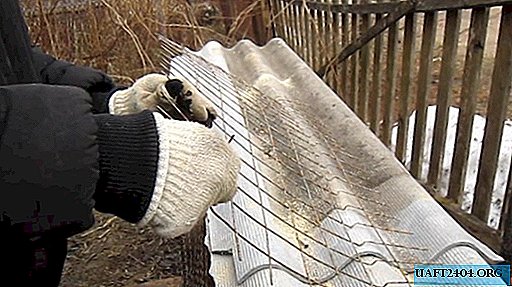
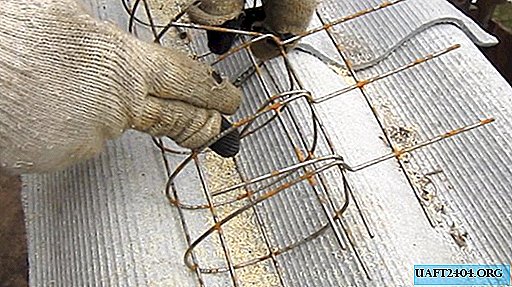
- After twisting, carefully beat off the bumps with a sledgehammer.
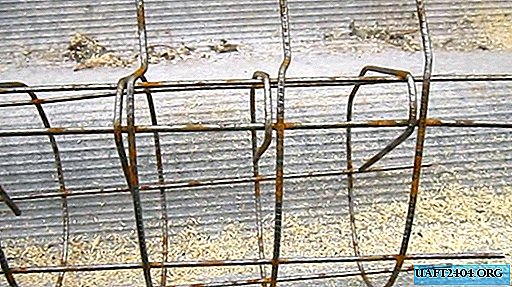

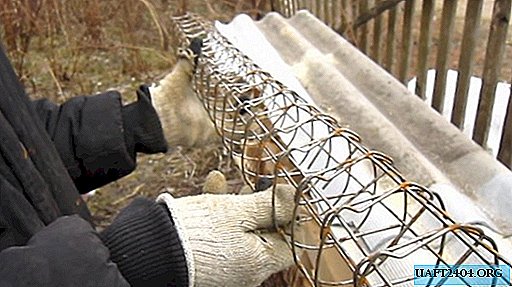
- Try on the arm belt in the two halves of the pipe.
- Correct the inaccuracies of closing with a sledgehammer by disassembling the design.
- Cut the punched tape into three equal lengths.
- Make clamps out of them.
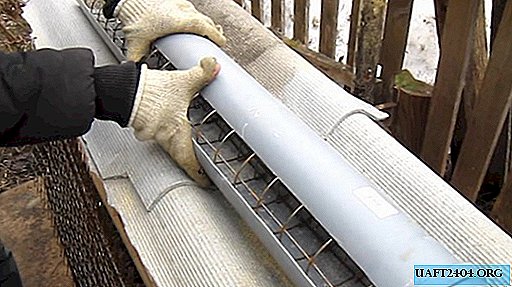
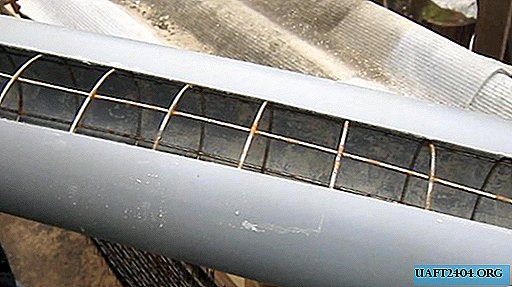
- An additional element that is required is a plywood disc with two short bolts. He is needed as a bottom. And bolts are necessary for forming holes for future fastening of the transverse bars of the fence. The diameter of the bottom must exactly match the diameter of the sealing ring of the sewer pipe. The sealing place, it is also the place where the pipes join, is distinguished by a bell.

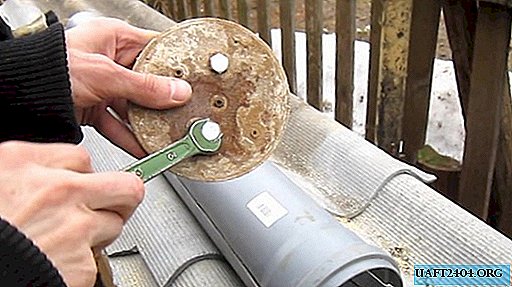
After the bottom is ready, proceed to the assembly of the structure:
- Lay the net in the pipe.
- Place a plywood disc in place of the seal.
- Lock the clamps at an even distance.
- Pass the pin through the holes.
- Center the line of bolts on the bottom and the protruding ends of the studs. These points are the fasteners of the fence.
- Tighten bolt connections.
- Glue the two side lines with tape.
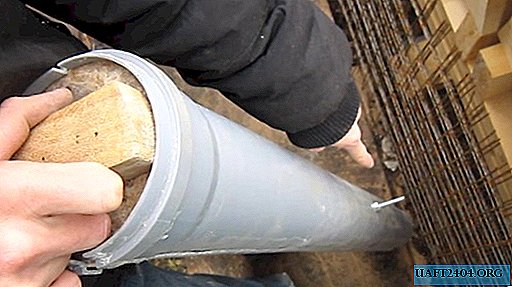

DIY column filling
Cement manufacturers recommend kneading the solution at a temperature of at least +20 degrees. I stuck to this value. In my opinion, it is optimal. I will not repeat the proportional composition described above, but I will draw your attention to the second important point - the kneading procedure. The fact is that liquid glass reacts with water. You say what reaction? I answer: it dissolves in it.
- In water, preferably warm (+20 degrees), the proportion of liquid glass is poured. Then, stirs.
- Cement is measured and poured out next. It should be thoroughly mixed. In two minutes it will swell.
- Then, sand is added in equal portions. I kneaded with a homemade mixer, put on a drill. The four-blade mixer is made of the same stud and punch tape. Plus four nuts.
- Be aware that adding water while making sand to make mixing easier will break the bond between glass and cement. And this is a drawback in the future. However, a minimal amount of water at the end of kneading is sometimes necessary.
Pouring the solution into the mold is carried out on level ground without the threat of falling. Perform ramming with a long rod or a stud. Although long, but light tapping on the body is more effective. The airing occurs mainly in the upper part of the column, since the mass of the pressing concrete becomes less. By the way, the column itself is poured upside down. After 24 hours, the concrete will solidify. This speed is facilitated by liquid glass. After another 6 hours, you can remove the plastic mold. But I do not recommend overexposure. There is a chance of sticking with overexposure. I want to say that I do not use central reinforcement. P cost is more expensive. But for a column length of 2 meters, it is necessary.


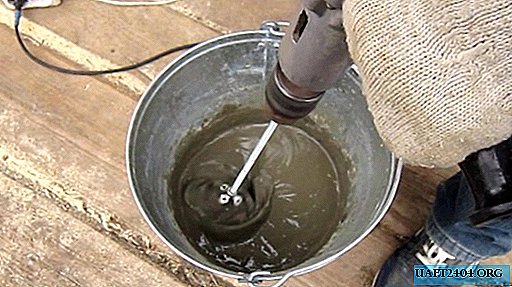


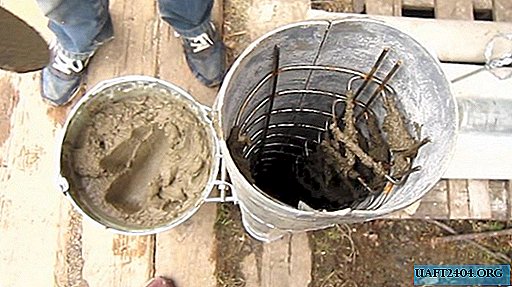



Conclusion
In conclusion, it is worth noting that many inexperienced householders and even workers are dismissive of the calculation regarding concrete pouring. In my experience, I have shown that cost savings are not in the last place in this matter. In addition to 13,080 rubles spent on wood, filling 25 posts cost 2,975 rubles. A productivity of 1 pillar / day will provide you with daily two-hour work for about a month. Although the installation and filling can be laid in 1.5 hours. And these are already questions of experience, consisting of acquired skills and knowledge.

Small calculations and what is a concrete column for?
Imagine you need a fence. Let it be a small blow-off fence made of slats or a little more massive - from a board with end dimensions of 100x20 mm. It’s a normal fence. You are not one of those who hides their garden from neighbors behind a profiled sheet of iron? I agree that iron is durable. But nature must breathe. Your land is no exception. Suppose you counted the cubature of boards. The amount obtained is not small. And the vast majority of private homeowners want to save. I will describe the first calculation based on the meter height of the fence on a plot of 7 acres:
- The length of one side of the plot is approximately 25 meters.
- Used board at the end 100x20 mm.
- The interval between the boards in the fence is 100 mm.
- 5 boards will be required per meter of fence length.
- For 25 meters of length, 125 boards will be required.
In total, at a price of 10 thousand rubles per cube of edged planed boards for one side of the fence, consisting of 125 boards (0.25 m3), you will have to pay 2,500 rubles. Why should we consider boards if the subject matter is a concrete pillar? But I have a counter question. Why do you need a concrete column? Is it possible to do sports and lift weights? This, of course, is a joke. But I want to scare you a little with the initial rates in order to focus on the number of posts around the site. Here you can not do without saving, so get ready for more complex mathematical formulas. To the upper amount is added the cost of the longitudinal bar, which acts as fence bars. And here is the moment. The optimal span between the supports is three meters. Divide 25 by 3 and get a rounded value of 8. That is, 16 three-meter bars are required on one side of the site (this is the top and bottom). With an end face size of 40x40 mm, the cost is 770 rubles. Total on the entire perimeter of the need for bars and boards in the amount of 13 080 rubles. This is really a lot if you add about 20 m2 of the area for painting with a protective compound. Due to your preferences regarding the anti-corrosion coating, it is up to you to decide which composition to buy. Here it is worth thinking about saving on poles. And make the fence beautiful and natural. Returning to the columns, their number is easily considered:
- 8 pieces are required on one side.
- For the entire perimeter 24.
- Plus 1 at the gate.
The support is buried in the ground at least half a meter. With a meter height of the fence, the column height will be 1.5 meters. But there is a trick: to use meter poles, also deepening them by half a meter and leaving the same height from the ground. At the same time, the crossbars are fixed on the top point of the column and in its middle directly at the surface of the earth. This design of a meter-high fence with half-meter supports meets the requirements of material resistance. That is, it is strong, reliable, economical in terms of construction. And now I answer the question, why do I need a self-made concrete pillar:
- Creation of a reliable support.
- Natural combination of materials.
- Good design. After all, the post is easily painted in the same color as the tree.
- Savings with zero losses.
- Ease and simplicity of filling meter columns, in contrast to samples of greater height. But more on that later.
In addition, you will work out one of the construction technologies.
Required materials and concrete pillar design
Having decided on the quantity, and we have 25 of them, we proceed to the calculation of the materials of manufacture. We will need:
- - Sewage pipe.
- - Punched tape.
- - Hardware group.
- - Steel welded mesh.
- - Cement.
- - The sand.
- - Water.
- - Additive.
As a form, I used a standard PVC pipe with a diameter of 110 mm. The mistake was that I bought a pipe for internal sewage. After a longitudinal cut after a while, she cringed in the literal sense. As if dried up. Therefore, you need to take not a gray, but a brown pipe for external sewage marked with polyvinyl chloride with nylon or polypropylene. These are two materials of manufacture. The first is more rigid, the second flexible. Although the wall thickness of both 3.2 mm. And plastic holds its shape perfectly after repeated fills. I personally prefer nylon polyvinyl chloride, as it is tough. The cost of a meter tube is 180 rubles. We will need one piece as a mold.
Immediately make a calculation:
- With a diameter of 11 cm, the perimeter is 34.5 cm. We take 34 cm, since 0.5 cm will go into two lines of longitudinal cutting of the pipe.
- The volume is 9.47 liters. Round up to 9.5 liters. That is how much solution needs to be prepared for one column.
For screeding two half-shells, three pieces of punched tape are required. The length will be 34 cm plus a margin for a metal grip. Get an ordinary collar. I recommend buying 1.5 meters of tape, taking into account the hem. After all, places for screed require reinforcement. A meter of tape costs up to 25 rubles.
To tighten the tape, three bolts, three nuts are required. There is no point in buying them. It’s better to search in unnecessary equipment. But the 8 mm hairpin and similar bolts need to be bought. Since the hairpin will play the role of supporting the lower crossbar of the fence. She will hold a bar 40x40 mm.
The calculation is as follows:
- On the sides of the column at the lower point of attachment of the fence, 4 or 5 cm is enough for the stud to protrude.
- Since the diameter of the column is 11 cm, after thinking, we divide the meter hairpin into 5 equal parts of 20 cm.
- 25 studs require 5 hairpins 5 meters long at 15 rubles apiece. Total - 75 rubles.
There are twice as many bolts as pillars. Namely 50 pieces. The price is for all 250 rubles. We use the simplest mesh with a cell of 40x40 mm and a wire thickness of 3 mm. The cost of a 1x2 m sheet, which is enough for two columns, is 95 rubles. We need 13 sheets of mesh. Total 1,235 rubles.
Pillar concrete calculation
Sand, water I do not take into account the cost, since this is a common building material. But together with cement and a water-repellent additive, an accurate calculation of the volume is required. After all, you want to save. Therefore, buy the optimal number of bags of cement and the volume of liquid glass, which I recommend as an additive. By the way, in 1 liter of liquid glass, 1.5 kg of weight. So, the calculation of the mixture. We need to fill a volume of 9.5 liters. But his weight is not 9.5 kg, but, naturally, more. This is due to the characteristics of the materials:
- Concrete:
- The concrete brand that we need is B15 (M200). This type of concrete is used for foundations and columns. What we need.
- Liquid concrete. In the characteristics, it is indicated by the letter P and a number. The liquid mixture has great advantages of air venting. It is easier to fill. But then more cement is required and the frost resistance index becomes less. Therefore, we take the consistency of P3, similar to a porridge of medium liquid.
- Brand of cement. In order not to talk for a long time, I use the M400. If you take the M300, then it needs more. If the M500, then, accordingly, less. In fact, a ratio of 1: 4 is enough. But we do not stop there.
- Bulk density of cement. Just weigh a liter of cement. Divide the resulting weight by volume. Then multiply by a thousand. The average figure is 1,300 kg / m3.
- The cost of a bag of cement weighing 50 kg is 325 rubles.
The following specifications are available at the factory:
- Frost resistance. The best indicator is F150. That is, the column will withstand 150 freezing cycles. You will say that this is not enough. Wait. If you properly make drainage, the pillar will not get wet and absorb water. Accordingly, the destruction will last a long time.
- Water resistant. Here, the figure is higher than the average W8. But who knows what is there with the primer in the spring?
- The smoothness of the surface. To add smoothness, more sand is added. This also applies to heavy reinforcement. Such a solution penetrates between the reinforcement more easily.
- Margin of safety. Very difficult thing. In short, with accurate calculations, a small margin of safety is taken. And it starts with 7%. If the proportions are measured by eye, the upper margin of the stock should be taken 41%. Strength depends on it. We will strive for the lowest coefficient of variation. That is, we will try to prepare the same solution every time. Therefore, we take the value for the safety margin of 9%. - Additive:
- I use liquid glass in the ratio of one percent of the volume of the column. Of course, they take more. More expensive plasticizers are used. But we are saving. One percent of 9.5 liters is 95 milliliters. But it’s easier to take 100 ml, dividing the liter capacity into 10 equal parts. So, 25 columns will require 2.5 liters of liquid glass. One liter bucket costs 85 rubles. In total for three it turns out 255 rubles. If you are planning a large-scale construction using liquid glass, you need to take containers of 20 or more liters. Because it is half the price. - Sand:
- The emptiness of the sand. It is calculated simply. You need to take a bucket of sand and the same in volume with water. Pour water into the sand to the brim. And then the formula. How much water remains, divide by the capacity of the bucket. Multiply by 100%. I got 6 l / 15 l * 100% = 40%.
- The humidity of the sand. If you have wet sand, you need to calculate the percentage. The volume of water and further costs depend on this. Take 1 kg of raw sand. Dry it. Then weigh. The formula is this: subtract the dry weight from the weight of wet sand and divide by the second weight the wet weight. The approximate value of 5%.
- Smoothness of grains. Close to practical action indicator. The sand from the river is smooth. Kneading with less water is easy. But the disadvantage of this concrete is low strength. Using sand from a quarry with sharp edges will eliminate the problem.
Yet again. voidness and humidity in artisanal production are of interest to the most curious.And in industrial conditions, cement density, granularity and bulk density of sand, clay or silt admixtures are also taken into account.
Final results
The resulting proportions and volume tested experimentally are as follows:
- Cement 1 part - 4.5 liters.
- Sand 2.2 parts - 9.7 liters.
- Water 0.6 parts - 2.77 liters.
- Liquid glass 0.01 part - 100 ml.
In terms of kilograms, other numbers are obtained:
- Cement 1 part - 5.85 kg.
- Sand 2.2 parts - 12.65 kg.
- Water 0.5 parts - 2.77 kg.
- Liquid glass 0.015 parts - 0.15 kg.
In most cases, the proportions are measured by volume. Now let's estimate how much material is needed for 25 posts:
- Liquid glass, as stated, 2.5 liters. That is, you need to buy banks.
- Sand 316 kg or 0.242 m3.
- Water 69.25 liters.
- Cement 146 kg. Divide by 50. We get almost three bags of cement with a total value of 975 rubles.
Of course, you can not make preliminary calculations based on moisture and voidness of sand or margin of safety or concrete liquid. This information is for further development. Since the old-fashioned methods do not always lead to success. But a quality concrete pylon can compete with a factory one.
Share
Pin
Tweet
Send
Share
Send











